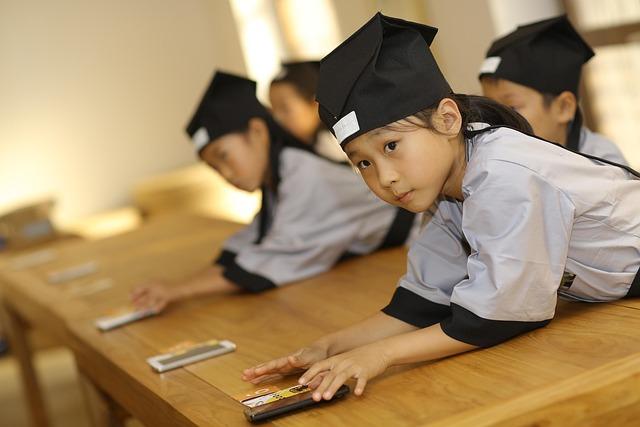San Diego State University is pioneering an important shift in education by emphasizing the value of students seeing themselves reflected in history. As academic institutions nationwide grapple with how to create more inclusive and engaging curricula, SDSU’s commitment to diversifying historical narratives highlights the profound impact this representation has on student identity, engagement, and academic success. Through innovative programs and community partnerships, the university is reshaping the way history is taught, ensuring that students from all backgrounds can connect with the past and envision their place within it.
The Importance of Representation in Historical Curriculum at San Diego State University
Visibility in historical narratives empowers students to connect more deeply with their studies by recognizing their own heritage and experiences reflected in the material. At San Diego State University, fostering diverse representations in the curriculum helps dismantle the traditional Eurocentric perspective, making history more inclusive and relevant for a multicultural student body. This not only enriches academic engagement but also strengthens cultural pride and identity among students.
Incorporating diverse voices within history encourages critical thinking and broadens understanding of societal developments. Students benefit from exploring stories that often go untold, such as those of indigenous communities, immigrants, and women who shaped regional and national histories. By presenting a more complete and nuanced portrayal of the past, San Diego State University promotes:
- Empathy and respect for diverse cultural backgrounds
- Increased academic achievement through relatable content
- Preparation for global citizenship in an interconnected world
| Representation Aspect | Impact on Students |
|---|---|
| Inclusion of indigenous histories | Enhanced cultural awareness and respect |
| Stories of immigrant communities | Strengthened sense of belonging and identity |
| Women’s contributions in regional history | Broader gender perspectives in historical discourse |
How Seeing Themselves in History Empowers Diverse Student Communities
Representation in educational materials cultivates a profound sense of belonging and validation among students from diverse backgrounds. When learners encounter stories, achievements, and struggles that mirror their own identities, it ignites a powerful connection to history and fosters personal empowerment. This engagement not only enhances academic motivation but also nurtures cultural pride and resilience, enabling students to envision their potential impact within the broader societal narrative.
Institutions like San Diego State University are actively integrating inclusive curricula that highlight diverse historical perspectives. This approach equips students with a richer understanding of the past while challenging monolithic narratives. Key benefits include:
- Increased cultural awareness: Encourages respect and recognition of different heritages.
- Critical thinking skills: Promotes analysis of complex social dynamics and historical intersections.
- Community empowerment: Strengthens identity and advocacy within minority groups.
| Impact Area | Outcome |
|---|---|
| Student Engagement | Higher participation in classes and projects |
| Self-Esteem | Improved confidence in academic and social settings |
| Long-Term Success | Greater retention and graduation rates |
Faculty Initiatives to Integrate Inclusive Narratives into History Courses
San Diego State University’s history department has undertaken groundbreaking efforts to reshape course curricula, ensuring that diverse perspectives are interwoven into every lesson. Faculty members have introduced new modules that highlight underrepresented groups, from Indigenous communities to immigrant narratives, fostering a learning environment where all students can see their heritage and experiences reflected in history. These initiatives are complemented by faculty-led workshops emphasizing culturally responsive teaching methods and the integration of primary sources that bring marginalized voices to the forefront.
Key strategies implemented include:
- Collaborative syllabus development with community historians and cultural organizations
- Incorporation of multimedia storytelling to engage diverse student populations
- Guest lectures and panels featuring scholars from varied backgrounds
- Regular curriculum reviews to assess inclusivity and representation
| Initiative | Impact |
|---|---|
| Community Historian Partnerships | Enhanced local historical accuracy and diversity |
| Multimedia Storytelling Integration | Increased student engagement and empathy |
| Guest Scholar Panels | Broadened academic perspectives and debates |
| Curriculum Inclusivity Audits | Continuous improvement in representation |
Recommendations for Expanding Multicultural Perspectives in Higher Education History Programs
Incorporating diverse narratives into history curricula is essential for creating an inclusive academic environment where all students can engage meaningfully with the past. Faculty are encouraged to integrate texts and resources authored by scholars from various cultural backgrounds, ensuring that perspectives traditionally marginalized in mainstream history are centered rather than sidelined. Collaborative course development with cultural organizations and community leaders can enrich content authenticity and spark student interest by linking historical events to present-day experiences.
Practical steps to foster inclusivity might include:
- Establishing interdisciplinary modules highlighting intersections of race, gender, and identity in historical contexts
- Encouraging service-learning projects that connect students with local communities and their histories
- Utilizing digital archives and oral histories that reflect a multiplicity of voices
| Strategy | Impact | Example |
|---|---|---|
| Guest Lectures from Diverse Historians | Enhances cultural credibility | Indigenous scholars sharing tribal histories |
| Multilingual Source Materials | Broadens accessibility and understanding | Primary documents in Spanish, Chinese, Arabic |
| Student-Led Research Projects | Empowers representation | Studies of local immigrant communities |
In Conclusion
As San Diego State University continues to emphasize the importance of diverse representation in historical narratives, the value of students seeing themselves reflected in history becomes ever more apparent. This inclusive approach not only enriches the learning experience but also fosters a sense of belonging and empowerment among students. By embracing stories that mirror their own identities and communities, students are better equipped to understand their place in the world and contribute meaningfully to society. SDSU’s commitment serves as a powerful reminder that history is not just a record of the past but a living dialogue that shapes the future for all.







